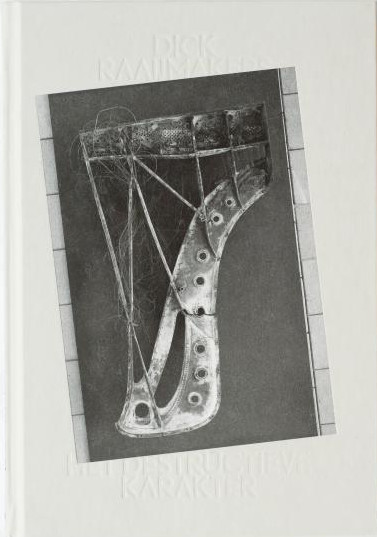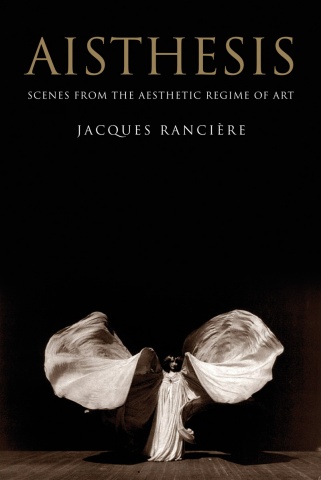Dick Raaijmakers: The Destructive Character / Het destructieve karakter (1992/2011) [English/Dutch]
Filed under book | Tags: · art, destruction, music

The Destructive Character by the Dutch composer, multimedia artist and theorist Dick Raaijmakers (1930) treats of a subject which, when considered from the aspect of the constant media coverage on destruction — whether ecological, military, or economical — should still be our very present and pressing concern.
The Destructive Character is a commentary on an essay from 1931 by Walter Benjamin bearing the same title and included in this publication. In his reaction, Raaijmakers focuses on the fact that the destructive character knows of only one activity: clearing away.
By means of a series of telling examples, from Fluxus and Glenn Gould to Laurel & Hardy, John Cage, and his own work, Raaijmakers discusses the characteristics and the peculiarities of the destructive character inside and outside the arts. Raaijmakers’s survey of this creative clearing, destructively discovering news paths, makes us understand that every destruction always implies a new beginning.
First published in Dutch in Raster #60, 1992
An expanded version of the 1992 article was edited and translated by Vincent W.J. van Gerven Oei
With the essay “The Destructive Character” by Walter Benjamin, translated by Edmund Jephcott
Publisher Onomatopee, Eindhoven, 2011
OMP54 / Cabinet project
ISBN 9789078454656 (NL), 9789078454663 (EN)
200 pages
via Vincent W.J. van Gerven Oei
Het destructieve karakter (Dutch, 1992, HTML)
The Destructive Character / Het destructieve karakter (English/Dutch, the English part is to be read backwards starting at the end, 2011, PDF)
Redesigns of the book by Irina Kopytina, Charlotte van den Bosch and Robin Maatman
See also Raaijmakers’ Method (1985) and A Brief Morphology of Electric Sound (2000).
Comment (0)Christopher Scoates: Brian Eno: Visual Music (2013)
Filed under book | Tags: · art, light, media art, music, video, video art, visual music

“This comprehensive monograph celebrates the visual art of renowned musician Brian Eno. Spanning more than 40 years, Brian Eno: Visual Music weaves a dialogue between Eno’s museum and gallery installations and his musical endeavors—all illustrated with never-before-published archival materials such as sketchbook pages, installation views, screenshots, and more. Steve Dietz, Brian Dillon, Roy Ascott, and William R. Wright contextualize Eno’s contribution to new media art, while Eno himself shares insights into his process. Every copy from the publisher includes a download code for a previously unreleased piece of music created by Eno, making this collection a requisite for fans and collectors.”
Publisher Chronicle Books, San Francisco, 2013
ISBN 1452129487, 9781452129488
416 pages
via 19preguntes
Brian Eno speaks about his visual work (video, 7 min)
EPUB (37 MB, updated on 2024-2-4)
PDF (51 MB, added on 2024-2-4)
Jacques Rancière: Aisthesis: Scenes from the Aesthetic Regime of Art (2011/2013)
Filed under book | Tags: · aesthetics, art, art history, art theory, body, cinema, dance, film, life, literature, music, painting, pantomime, philosophy, photography, poetry, politics, representation, sculpture, theatre, theory

Rancière’s magnum opus on the aesthetic.
“Composed in a series of scenes, Aisthesis–Rancière’s definitive statement on the aesthetic–takes its reader from Dresden in 1764 to New York in 1941. Along the way, we view the Belvedere Torso with Winckelmann, accompany Hegel to the museum and Mallarmé to the Folies-Bergère, attend a lecture by Emerson, visit exhibitions in Paris and New York, factories in Berlin, and film sets in Moscow and Hollywood. Rancière uses these sites and events—some famous, others forgotten—to ask what becomes art and what comes of it. He shows how a regime of artistic perception and interpretation was constituted and transformed by erasing the specificities of the different arts, as well as the borders that separated them from ordinary experience. This incisive study provides a history of artistic modernity far removed from the conventional postures of modernism.”
First published as Aisthesis : Scènes du régime esthétique de l’art, Éditions Galilée, 2011
Translated by Zakir Paul
Publisher Verso Books, 2013
ISBN 1781680892, 9781781680896
304 pages
via falsedeity
Reviews: Hal Foster (London Review of Books), Joseph Tanke (Los Angeles Review of Books), Marc Farrant (The New Inquiry), Ali Alizadeh (Sydney Review of Books), Jean-Philippe Deranty (Parrhesia).
Roundtable discussion with Rancière at Columbia (video, 43 min)
Selected interviews and reviews (in French)

